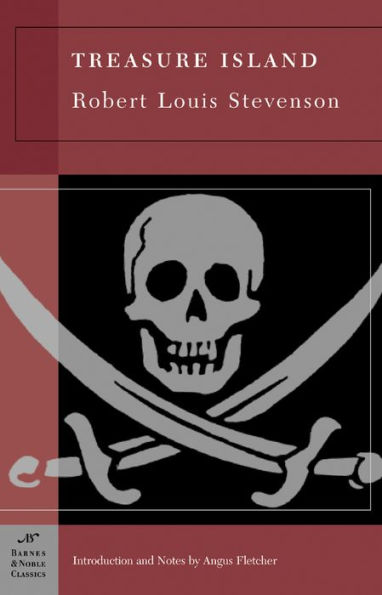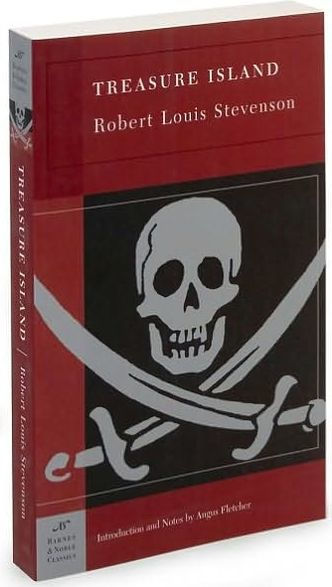Read an Excerpt
From Angus Fletcher’s Introduction to Treasure Island
If we go back to the origins of adventure story fiction, we discover that the heroic quest remains its principal myth. Quest-romances take many different forms, whether it be the search for the Holy Grail in Arthurian legend, for the Golden Fleece (as in the Argonautica, the ancient epic of Jason and the Argonauts), for the safe return home after perilous Homeric wanderings, as in the Odyssey, or for a wide range of ends both material and spiritual. What is important is that, once established in classic form, the great adventure stories render all readers, of any age, essentially children at heart. The quest gives us our dream of success, and when we tire of daily labor in making a living, it returns us to that time of the dream. Thus for Treasure Island the questing dream comes out of a long preceding history. Besides two early travel books based on journeys in France, Stevenson told stories in homage to the Near Eastern tradition of loosely woven adventures: his New Arabian Nights (1882), in which the exotic nature of travel to distant lands is imagined as occurring in stories set in Europe. This art of romance thrives on the incredible voyage, the sailor’s yarn (in his day perhaps more fashionable than any other type), the tall frontier tale, including exotic or utopian settings that could never actually exist, because romance demands almost complete power to overcome all human obstacles. The mode of romance therefore demands freedom to imagine. Yet the tradition seems to mix realism on some level with such unreal situations for the hero. In Robinson Crusoe (1719) Daniel Defoe mingles fact and fiction liberally. The same mixture appears in Arthurian lore, while with the rise of the modern middle classes a new kind of romance arises around the quest for material success.
By Stevenson’s time Protestant beliefs and secular technology had long since fueled the rise of capitalism. Robinson Crusoe, while it inaugurated the realistic tradition of the novel in England, makes a continuous critical commentary on mercantile capitalism and its value system, especially as they derive aid and comfort from Protestant Christianity. Crusoe, whose name plays on the name of Christ, is in effect a marooned capitalist, who must rebuild his fortune, by returning his commercial skills to their most primitive beginnings. In this process Crusoe learns who he actually is. Such a quest is tied to the science of counting up supplies, enemies, distances, and even dreams, all of which become the very stuff of realistic modern fiction. Typically the castaway begins his lonely sojourn by surveying what is left to him from the ruins of shipwreck—that is, making the inventory of tools available beyond mere life itself. To be sure, virtually all the major novelists comment, directly or allusively, on the nature and sources of wealth, often indicating how these derive from imperial expansion. Scholars have found these middle-class indicators in what might seem the strangest places—for example, the novels of Jane Austen. Character and commerce seem not so secretly linked. Yet how could it be otherwise, since the bourgeois novel attempts an accounting of life? At the end of the nineteenth century, Henry James claimed for the novel that its function was to provide genuine “criticism” of the way we live, to provide a kind of narrative philosophy, storytelling endowed with serious levels of meaning, suggesting profound and often obscure themes. Stevenson’s essay “A Humble Remonstrance” (1884; see, in “For Further Reading,” The Lantern-Bearers and Other Essays) countered James’s critical principle by favoring romance. There is no way, the essay claimed, for the novel to “compete with life.” Instead the novel should maintain its exhilarating imaginative independence from the crude facts of existence, drawing upon those facts solely as a resource for delineating passion. (The saame article faults the distinguished American novelist and editor William Dean Howells for a similar dependency upon the new naturalistic style.) Stevenson wanted to keep the idea of treasure somehow pure. With Henry James, whom Stevenson so much admired and who became his valued correspondent, the idea of a treasure sought by adventurous quest took on an ironic aspect. James’s critical gaze, enhanced by his own obsession with wealth, led him to analyze the typical methods of acquiring it, such as real estate speculation in the value of houses or New Englanders piling up industrial wealth or European princes marrying American money. In these late novels and stories James’s critical conceptions collide with material obsessions, and the results are often obscure, even uncanny, as in The Ambassadors, The Wings of the Dove, and The Golden Bowl.
By the author’s own account “the seed” of his novel came from the idea of a treasure chest he found in another adventure story, Charles Kingsley’s At Last (1871). As a goal of acquisitive good luck and daring, treasure in general provides the motive, indirectly or directly (consider Rider Haggard’s immensely popular novel King Solomon’s Mines) for all sorts of adventures. The nineteenth century saw a new world of yearning popular literature, much like Hollywood movies and television shows today. Sentimental romances, “penny dreadfuls,” and “shilling shockers” enthralled large masses of readers. The fossilized popular novels of this earlier date now sit moldering on the storage shelves of pre-electronic libraries, their desiccated pages exuding a dismal smell. Once great in number and acclaim among the young, they saved many a tedious day from misery. The adventure novels of G. A. Henty (1832–1902) appeared in more than 150 volumes. In twentieth-century Britain, Henty was displaced by the more up-to-date Percy Westerman (1876–1959; at school youngsters called him “Percy Piffler,” to show they knew their author), who wrote more than 100 such books. In the United States, to match such prolific output one would look to the 135 “dime novels” of Horatio Alger (1832–1899), again showing how the market of books for the young continued and still continues to put a premium on production. This literature multiplies mainly because it lacks any serious, thought-provoking realism about the hazards of either romance or adventure. The book cannot be read fast enough! Sentimental romances and the adventure stories are of course the same commodity, masked by gender difference. If the novel is to work, it must on some level achieve an illusion of escape, and also of achieving a goal at the same time.





